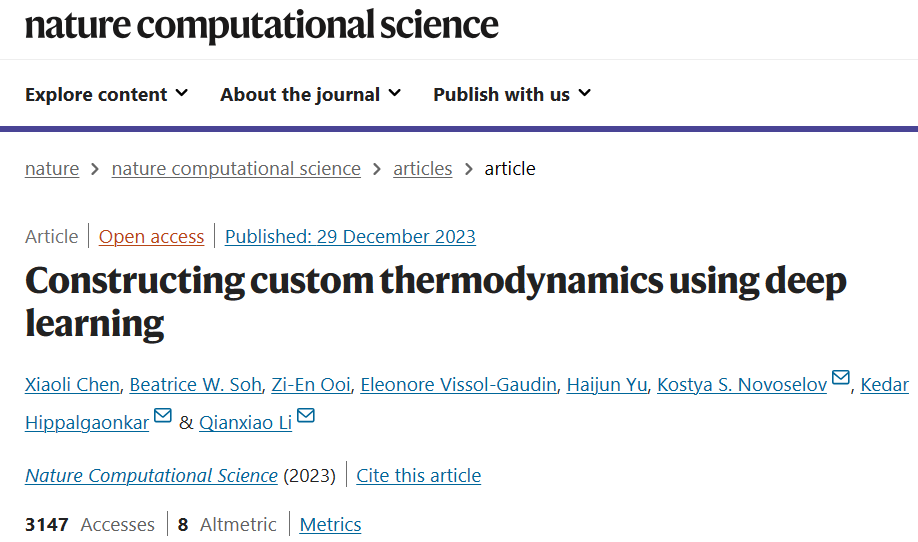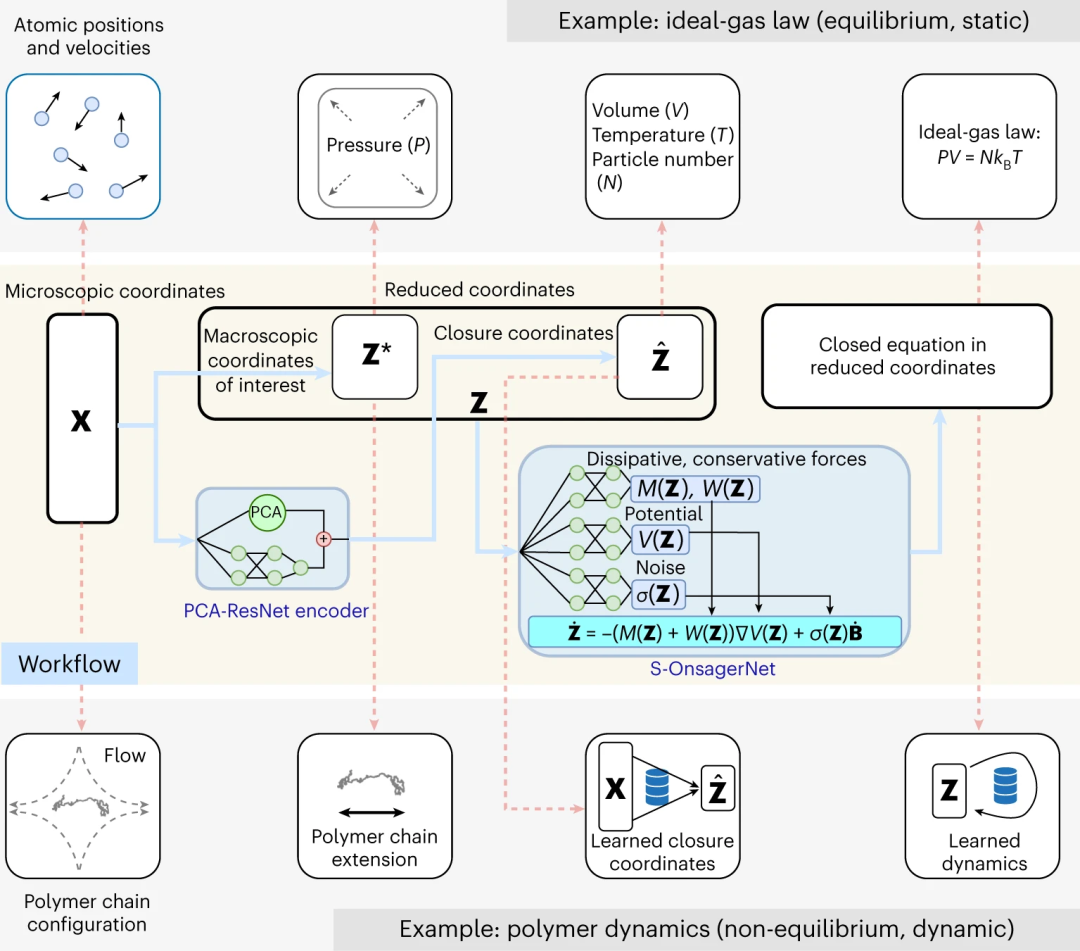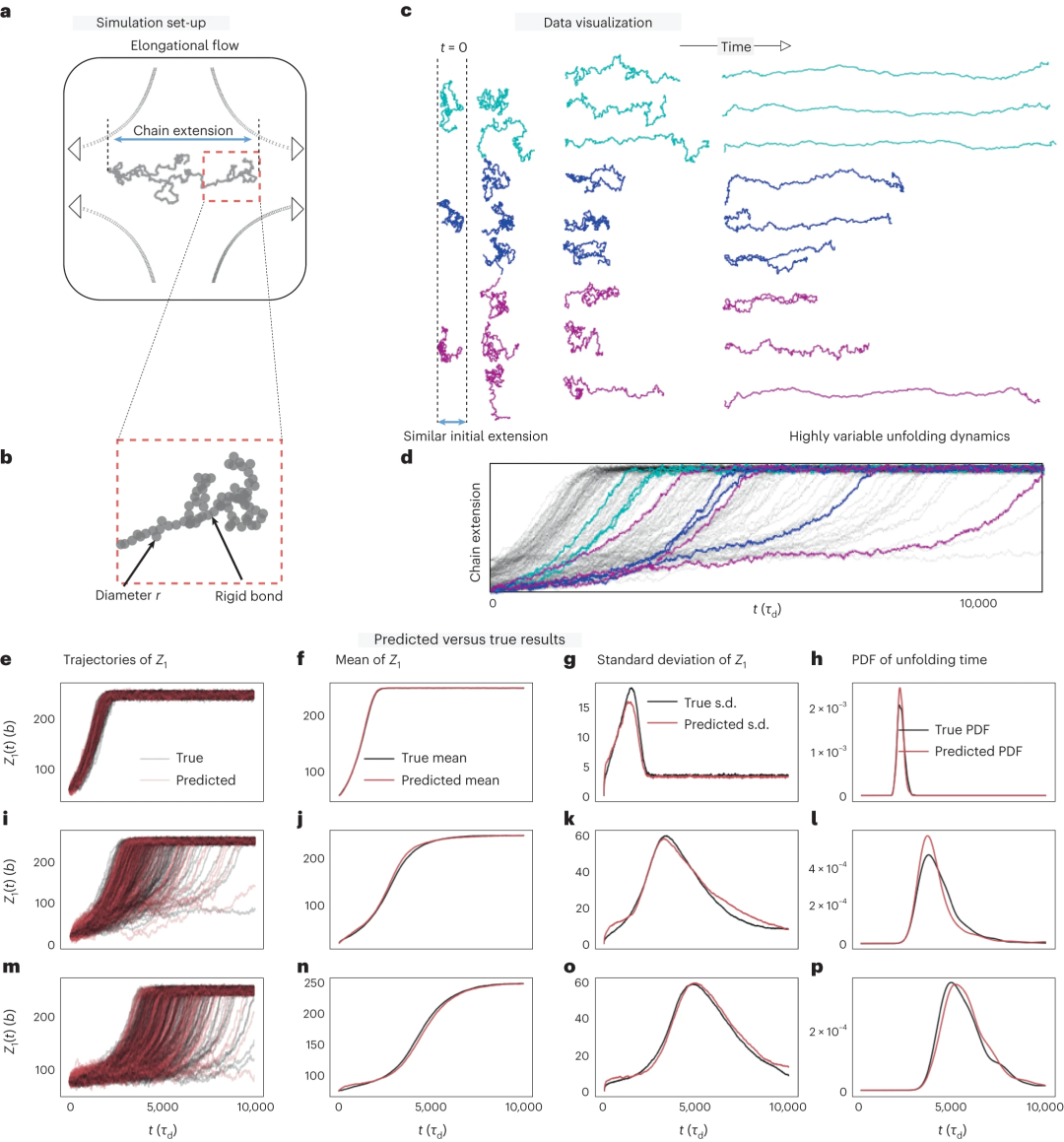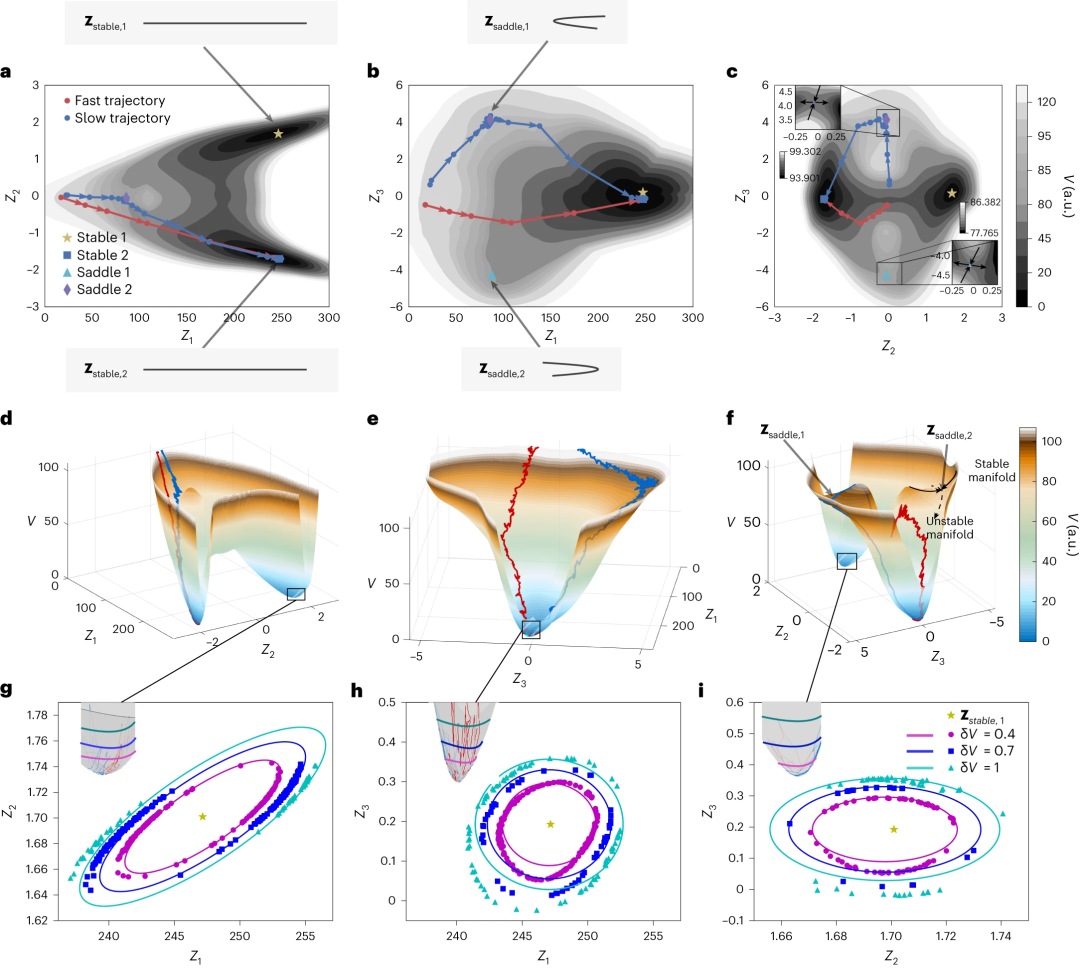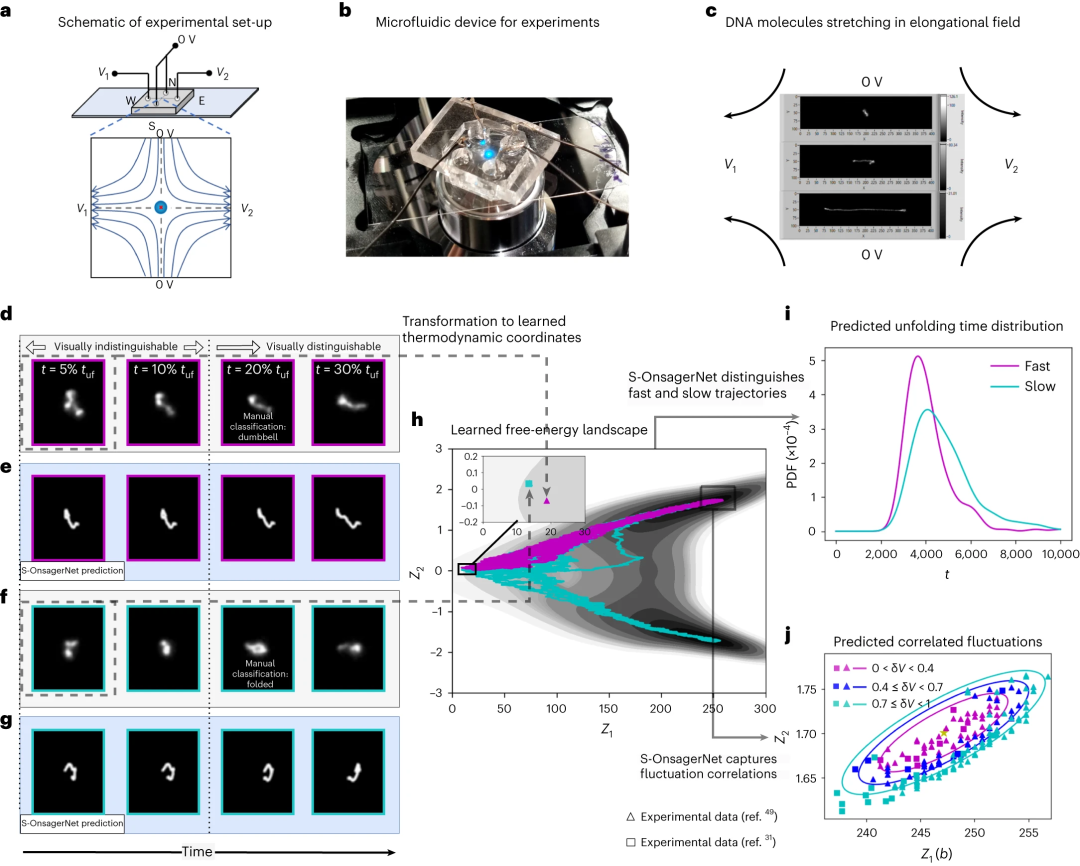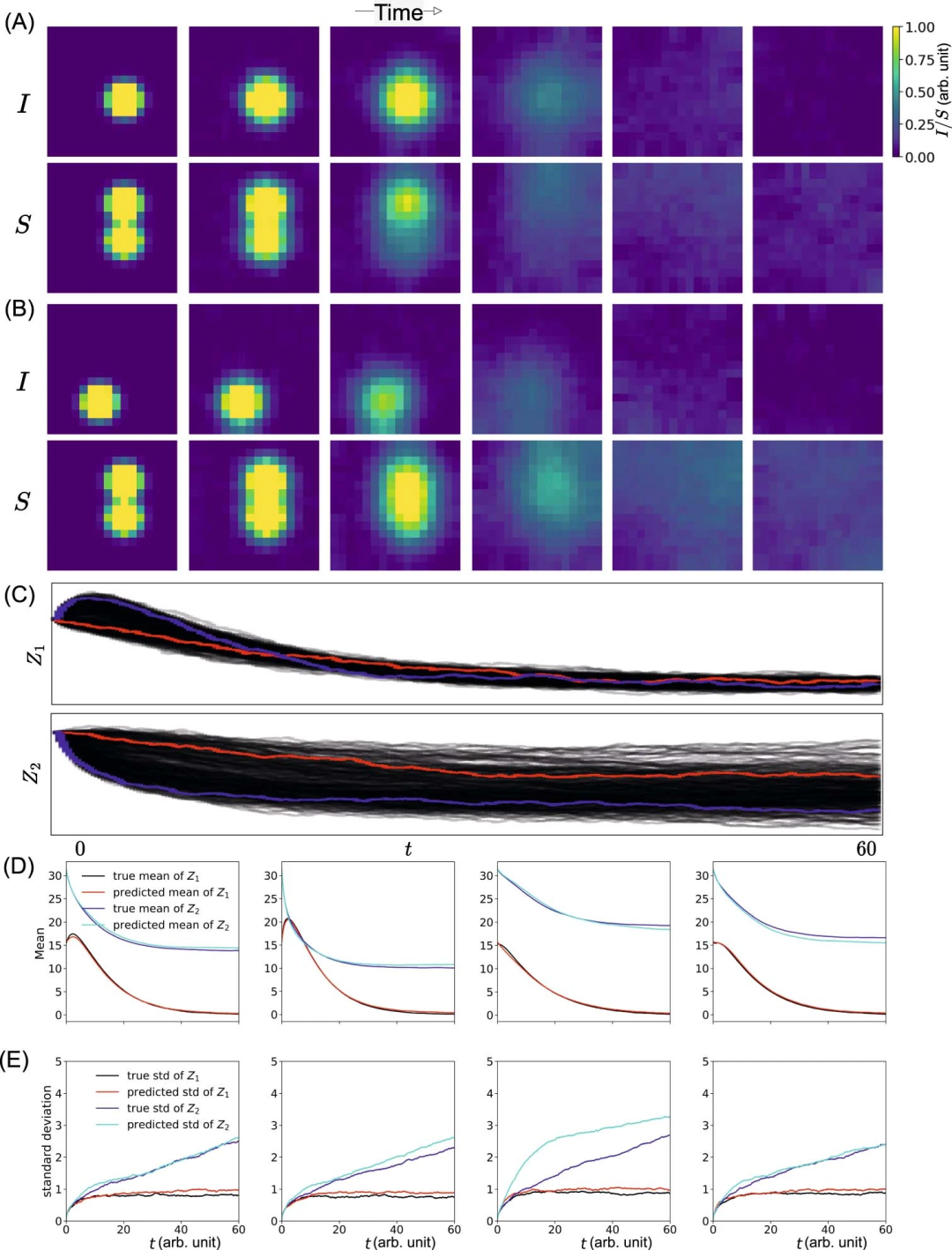Automated scientific discovery based on previously accumulated data and known physical principles is one of the most exciting applications of artificial intelligence. Automated hypothesis creation and verification can help scientists study complex phenomena where traditional physical intuition may fail. Recently, a research team from the National University of Singapore, Singapore Agency for Science, Technology and Research (A*STAR), Nanyang Technological University and the Chinese Academy of Sciences developed an artificial intelligence platform based on the generalized Onsager principle. : S-OnsagerNet, which can learn a description of the macrodynamics of any stochastic dissipative system directly from observations of its microscopic trajectories. This method simultaneously constructs simplified thermodynamic coordinates and explains the dynamics on these coordinates. The researchers demonstrated its effectiveness through theoretical studies and experimental verification of the stretching of long polymer chains in external application fields. Specifically, three interpretable thermodynamic coordinates are learned and a dynamic landscape of polymer stretching is constructed, including the identification of stable and transition states and the control of stretching rate. This general approach can be used to address a wide range of scientific and technological applications. The research is titled "Constructing custom thermodynamics using deep learning" and was published in "Nature Computational Science## on December 29, 2023 #"superior. Paper link:
https://www.nature.com/articles/s43588-023-00581-5 Modern scientific methods employ a universal approach to ensure steady and non-conflicting progress in our understanding of nature: new theories need to be hypothesized and tested against previously accumulated data, are compatible with fundamental scientific principles and can be verified experimentally. Unfortunately, there is no general algorithmic recipe for doing this in complex systems to facilitate discovery. So, so far, only the most basic physical phenomena (usually static, in equilibrium) can be described by a set of intuitive equations. Many dynamic, nonequilibrium phenomena that determine the functionality of biology, soft condensed matter, and chemistry are described by very approximate empirical laws. Advances in artificial intelligence and machine learning offer the possibility of data-driven solutions to this challenge. Onsager reciprocity relationship is the reciprocal relationship between coefficients in the linear phenomenological law that describes the irreversible thermodynamic process. It is the reflection of the time reversal invariance of the microscopic motion equation of particles on the macroscopic scale. This relationship was established in 1931 by Lars Onsager. Lars Onsager was awarded the 1968 Nobel Prize in Chemistry for his discovery of these reciprocal relationships. Here, researchers develop an artificial intelligence platform, Stochastic OnsagerNet (S-OnsagerNet), that can discover interpretable and closed thermodynamic descriptions of arbitrary stochastic dissipative dynamical systems directly from observations of microscopic trajectories. There are two main approaches to understanding and predicting the behavior of dynamic processes from data: unstructured and structured. The S-OnsagerNet method belongs to the latter category. Until now, there has been a lack of a general structured approach to modeling the dissipative, non-equilibrium and noise dynamics that often arise in soft matter, biophysics and other applications. The researchers specifically targeted this type of problem based on the classic Onsager principle. Macroscopic thermodynamic descriptions of physical systems are highly sought after for the insights they provide. However, for general complex dynamical systems, constructing an intuitive thermodynamic description for subsequent analysis and control is a difficult task. The S-OnsagerNet approach addresses this challenge. Illustration: The overall workflow of the proposed method. (Source: paper) For a given microscopic dynamics, a macroscopic thermodynamic description is learned by simultaneously constructing low-dimensional closed coordinates (ensuring partial interpretability) and the time evolution laws on these coordinates. Unlike general artificial intelligence approaches, the platform inherently limits the search to physically relevant evolutionary laws. In particular, the researchers ensured compatibility with existing scientific knowledge by building the neural network architecture based on generalized Onsager principles. The researchers demonstrated their approach by learning the stretching dynamics of polymer chains containing up to 900 degrees of freedom, compressing them into a thermodynamic description involving only three macroscopic coordinates, which are used in calculations and Control of polymer stretching kinetics from experimental data.
Illustration: simulation setup, data visualization, predicted and real stretch trajectories and their statistics. (Source: paper)
The research constructs an energy picture of macroevolution and reveals the existence of stable states and transition states. This can be viewed as a dynamic equation of state. Mastery of such equations enables the design of verification computational experiments, including the interpretation of thermodynamic coordinates and the control of polymer stretch rates. Illustration: The learned potential energy landscape. (Source: Paper)
The researchers extended this further to conduct single-molecule DNA stretching experiments and showed that their thermodynamic description can be used to distinguish between fast and slowly stretching polymers, well beyond current human labeling capabilities . Furthermore, the predicted fluctuation correlations derived from the free energy landscape are consistent with experimental data. Illustration: Experimental data analysis. (Source: paper)
To further demonstrate general applicability, the researchers applied S-OnsagerNet to derive the macroscopic dynamics of spatial epidemics. Illustration: Data visualization and prediction results. (Source: paper)
The potential applicability of the method proposed in this study extends beyond polymer and epidemic dynamics to include complex dissipative processes in general, such as protein folding, self-assembly, and glass systems. There are many worthy research directions in the future to further improve the robustness and versatility of the proposed method. One can apply this method to study the macroscopic thermodynamics of other systems of scientific interest. The above is the detailed content of AI platform based on generalized Onsager principle to build custom thermodynamics. For more information, please follow other related articles on the PHP Chinese website!

